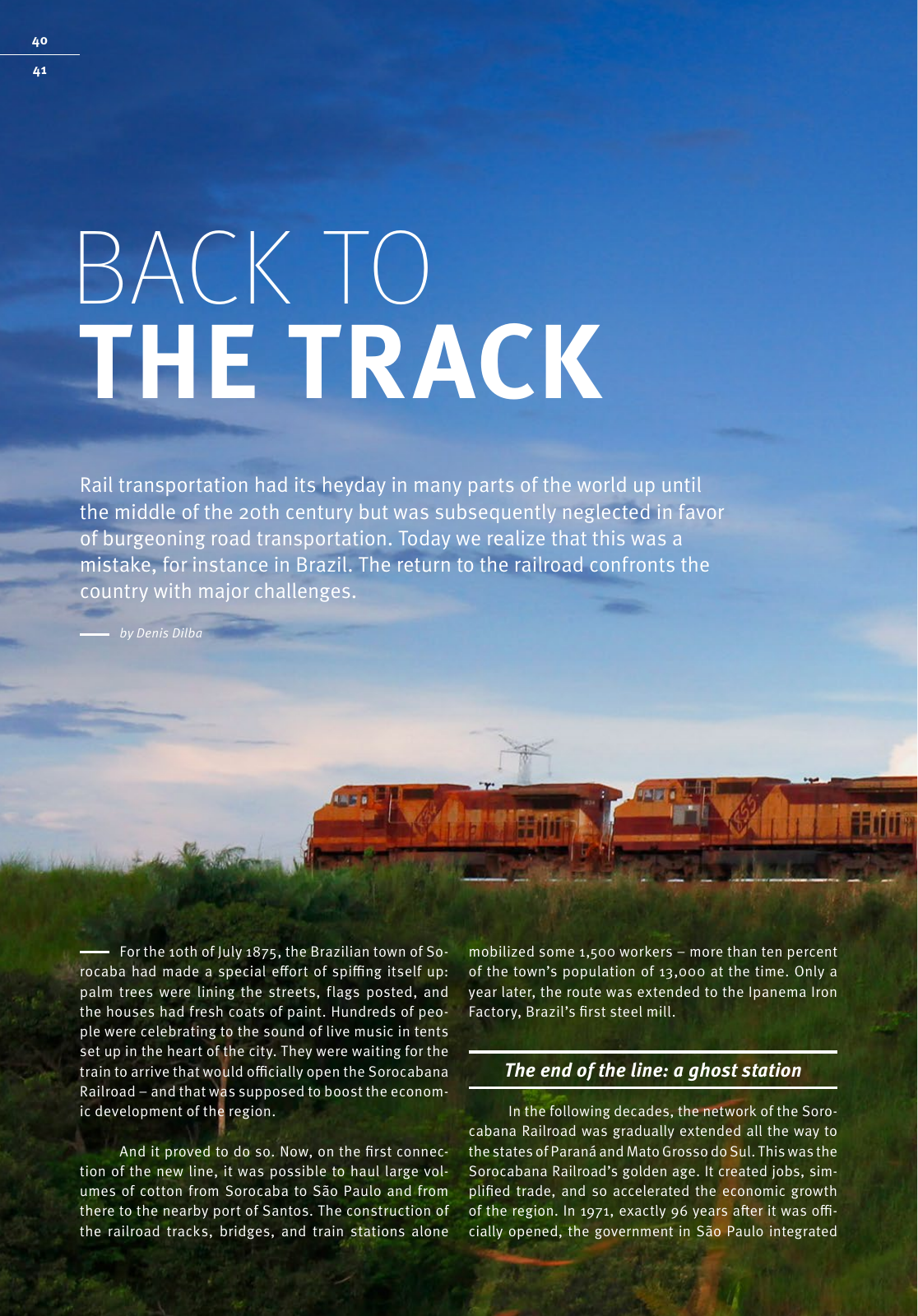Rail transportation had its heyday in many parts of the world up until the middle of the 20th century but was subsequently neglected in favor of burgeoning road transportation Today we realize that this was a mistake for instance in Brazil The return to the railroad confronts the country with major challenges by Denis Dilba BACK TO THE TRACK For the 10th of July 1875 the Brazilian town of So rocaba had made a special effort of spiffing itself up palm trees were lining the streets flags posted and the houses had fresh coats of paint Hundreds of peo ple were celebrating to the sound of live music in tents set up in the heart of the city They were waiting for the train to arrive that would officially open the Sorocabana Railroad and that was supposed to boost the econom ic development of the region And it proved to do so Now on the first connec tion of the new line it was possible to haul large vol umes of cotton from Sorocaba to São Paulo and from there to the nearby port of Santos The construction of the railroad tracks bridges and train stations alone mobilized some 1 500 workers more than ten percent of the town s population of 13 000 at the time Only a year later the route was extended to the Ipanema Iron Factory Brazil s first steel mill The end of the line a ghost station In the following decades the network of the Soro cabana Railroad was gradually extended all the way to the states of Paraná and Mato Grosso do Sul This was the Sorocabana Railroad s golden age It created jobs sim plified trade and so accelerated the economic growth of the region In 1971 exactly 96 years after it was offi cially opened the government in São Paulo integrated 40 41

Hinweis: Dies ist eine maschinenlesbare No-Flash Ansicht.
Klicken Sie hier um zur Online-Version zu gelangen.
Klicken Sie hier um zur Online-Version zu gelangen.